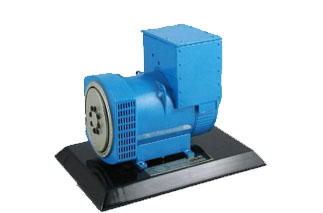
Principle and main method of diesel engine fault diagnosis
One, forewordIn the course of using diesel engine, there are some failures of one kind or another. A kind of fault can be characterized by one or more abnormal phenomena, such as high pressure oil pump wear and tear, can show the start is difficult, also can show the output power is insufficient, can also be unstable phenomenon such as characterized by a low speed; A kind of abnormal phenomenon can also be caused by one or more of the cause of the problem, such as diesel engine power is insufficient, may be due to the diesel engine fuel injection pump failure, may also be a valve-train diesel engine and inlet and exhaust systems fault, also may be injector fuel injection, also may be not enough in a diesel engine cylinder compression pressure.
Fault diagnosis is complicated, the purpose of such change of various kinds of failure phenomenon, according to their occurrence, development and change process, by which a system or institution, is to determine the fault caused by the reason, in order to rule out timely and accurately, make the diesel engine running back to normal.
So in fault diagnosis, the turbine management not only should be familiar with the diesel engine structure principle, operation, debugging, but also to master to find general principles and methods of the fault, only in this way, when the actual problems, through careful observation and analysis, the right to ask the right processing method, to eliminate the fault.
2. Abnormal phenomenon after diesel engine failure
The diesel engine fails and the following abnormal phenomena usually occur:
1. Abnormal sound when running. Such as abnormal percussion, blasting, boasting, exhaust, periodic friction, etc.
2. Abnormal operation. If the diesel engine is not easy to start, there will be violent vibration, insufficient power, unstable speed, etc.
3. Abnormal appearance. For example, diesel exhaust pipes emit black smoke, blue smoke and white smoke, and all systems leak oil, water leakage, air leakage, etc.
4. Temperature anomaly. The temperature of oil and cooling water is too high, the exhaust temperature is too high, the bearing is too hot, etc.
5. Abnormal pressure. Low oil, cooling water and fuel pressure, reduced compression pressure, etc.
6. Abnormal smell. When the diesel engine is running, it gives off odor such as stink, coke and smoke.
Diesel engine run time appear abnormal phenomenon, must find out the reasons of abnormal phenomenon seriously, so adept at analysis, reasoning, judgment, we look at essence through the phenomenon, and find out the cause of the failure parts, troubleshooting.
Iii. Principle of diesel engine fault diagnosis and elimination
Diesel engine failure, should keep calm, step by step is the destination for inspection and analysis, must not went blind inspections, random disassembly, should be based on the abnormal symptoms, signs, the noise of the fault, occurrence time, change rule to find the fault part, first of all, from the principle and the structure level of a detailed analysis of reasoning, to make the right judgment to find the cause of the problem.
The general principles of judging diesel engine failure are: combine structure, contact principle, find out the phenomenon, combine the reality, from simple to complex, from the surface to the inside, according to the system section, find the reason.
1. To judge faults, it is necessary to analyze and eliminate them comprehensively
The diesel engine's systems, components and parts are closely related. The failure of one part or system or one part will inevitably involve parts or parts of other systems. Therefore, a fault phenomenon can not be viewed in isolation, we should analyze the cause of the fault from the whole and timely eliminate the fault.
2. Minimize disassembly when looking for diesel engine failure
In troubleshooting, can not blindly remove the diesel engine parts, must first understand before disassembling the structure principle of diesel engine, such as the failure positions, only to establish on the basis of the scientific, careful analysis can be dismantled.
3. Look for trouble carefully, combine to see, hear, touch, smell, try to check all directions
In the absence of advanced detection equipment, fault diagnosis is generally made by direct sensory diagnosis, which can be summarized as: see, hear, touch, smell and try.
See: the external characteristics of the diesel engine during operation, such as whether there is any abnormality in the exhaust pipe exhaust; Whether the oil color is normal; Whether there is any part of diesel oil leakage in the fuel system; Whether there is leakage or oil leakage in the cooling system and lubricating system; Various gauges of diesel engines indicate whether there is any abnormality; Whether the nuts of the moving parts are loose; Whether the diesel engine vibrates or not.
Listen: mainly listen to the abnormal sound of diesel engine during operation. Judge the fault according to the nature and location of the abnormal sound. Such as diesel combustion in the combustion chamber when the explosion is even; Is there any abnormal impact sound of piston, connecting rod and crankshaft during the operation of diesel engine? Inlet and exhaust valves and diesel engine timing gear have no abnormal sound.
Touch: touch by hand. For example, the pulsation of tubing and the vibration of unit; Whether the temperature of the oil pipe or oil shell is the same as that indicated by the oil thermometer, etc.
Olfactory: the diagnosis is based on the smell from the faulty area. Whether the diesel engine has coke smell in the working process; Whether the diesel engine has the smell of burning engine oil.
Try: test and verify. Such as the use of single cylinder ceasefire diagnosis diesel engine abnormal noise.
According to the characteristics of different faults, the above method should be applied flexibly and concretely. Through thinking, analyzing and reasoning, the objective analysis of faults should be carried out to find out the cause of faults and propose the elimination measures.
4. Main methods to judge diesel engine failure
1. Partition method
When the fault is suspected to be caused by a working part, the part can be partially stopped and the failure phenomenon can be observed to determine the fault location. The partition method is to stop the operation of a single cylinder of diesel engine or stop the injection of several or even all cylinders one by one, and observe the working changes before and after the injection. It is most effective to check the working condition of each cylinder by this method, especially to check the exhaust color of each cylinder. If the diesel engine is emitting black smoke, the analysis believes that it is caused by the bad atomization of an cylinder fuel injector. At this time, the cylinder can be stopped working.
2. Comparison method
After comparison with the more common, diesel engine failure, if have doubt on which a component or system, change a good quality parts or a normal system, observe whether the fault is eliminated, if the failure phenomenon disappears, prove that failure occurs in the component or the system.
3. Validation method
The verification method is to find out the fault by checking the correctness of the past analysis through the trial adjustment or disassembly of the known fault cause. In order to determine the cause of failure, the technical state of the diesel engine is changed and its influence on the performance of the diesel engine is observed. If the oil pressure of the diesel engine is low, the filter can be cleaned first. If the state has not disappeared, other reasons can be found.
4. Instrument inspection method
The instrument inspection method is to use the instrument or instrument to test the diesel engine, find out the hidden trouble, understand the performance and condition of the unit.
V. conclusion
In a word, different methods of troubleshooting should be flexibly applied to different fault phenomena, and the principle and structure of diesel engine should be taken into account to find a solution to the problem. Through the analysis of the principle and main methods of diesel engine fault diagnosis, the aim is to make the engineers to find out the fault in a short time and to eliminate the fault in time when they encounter the diesel engine failure.

